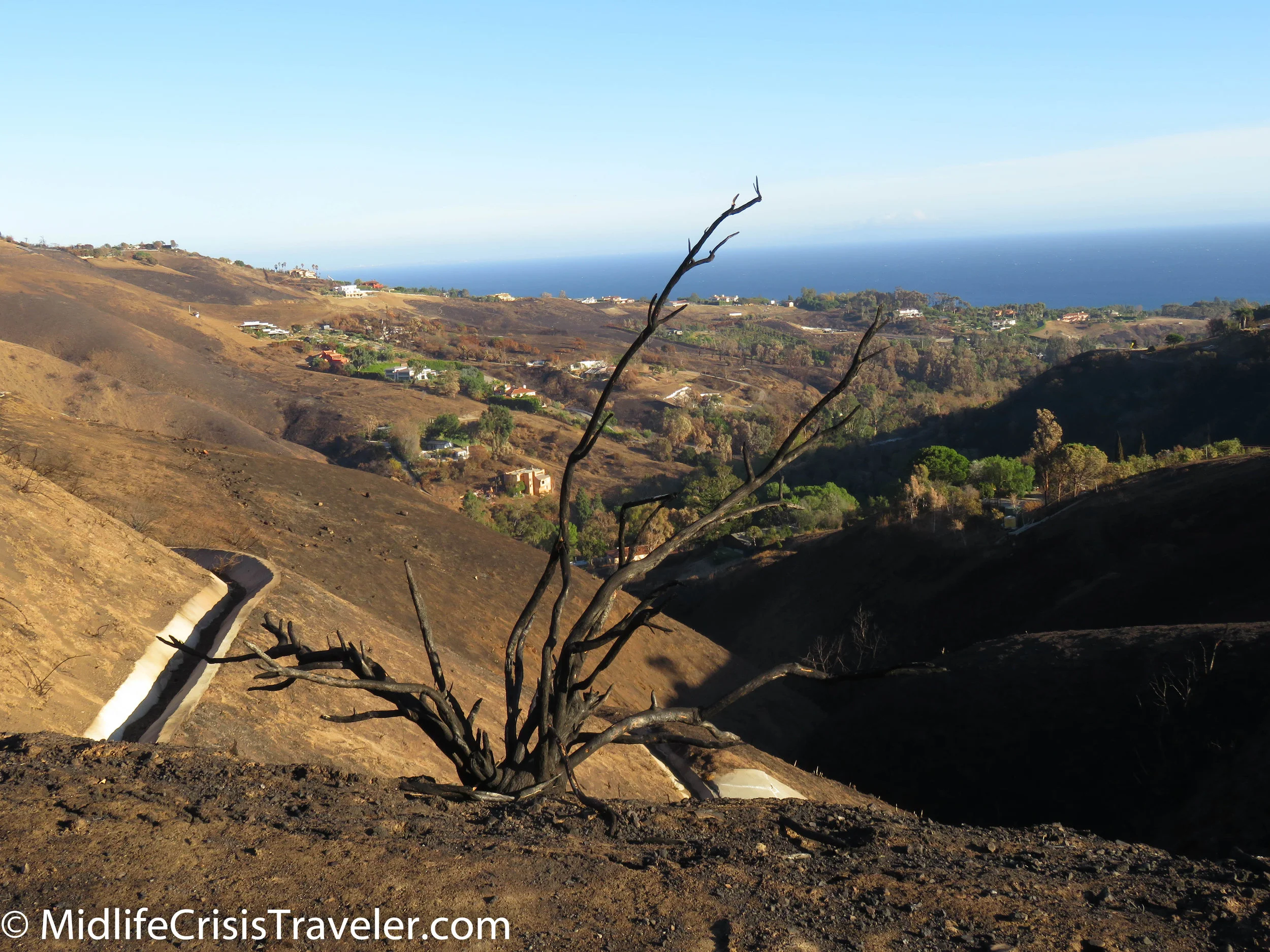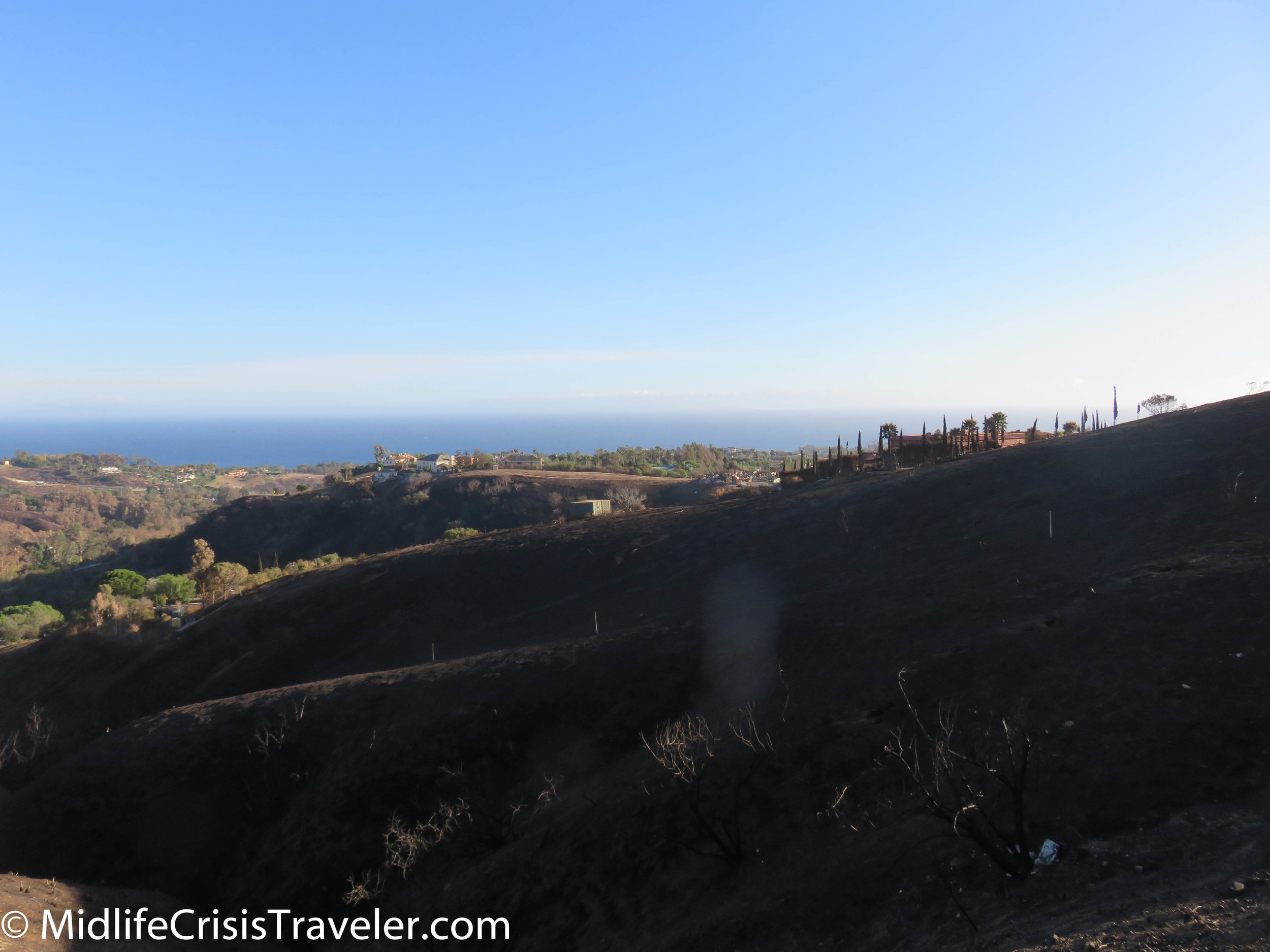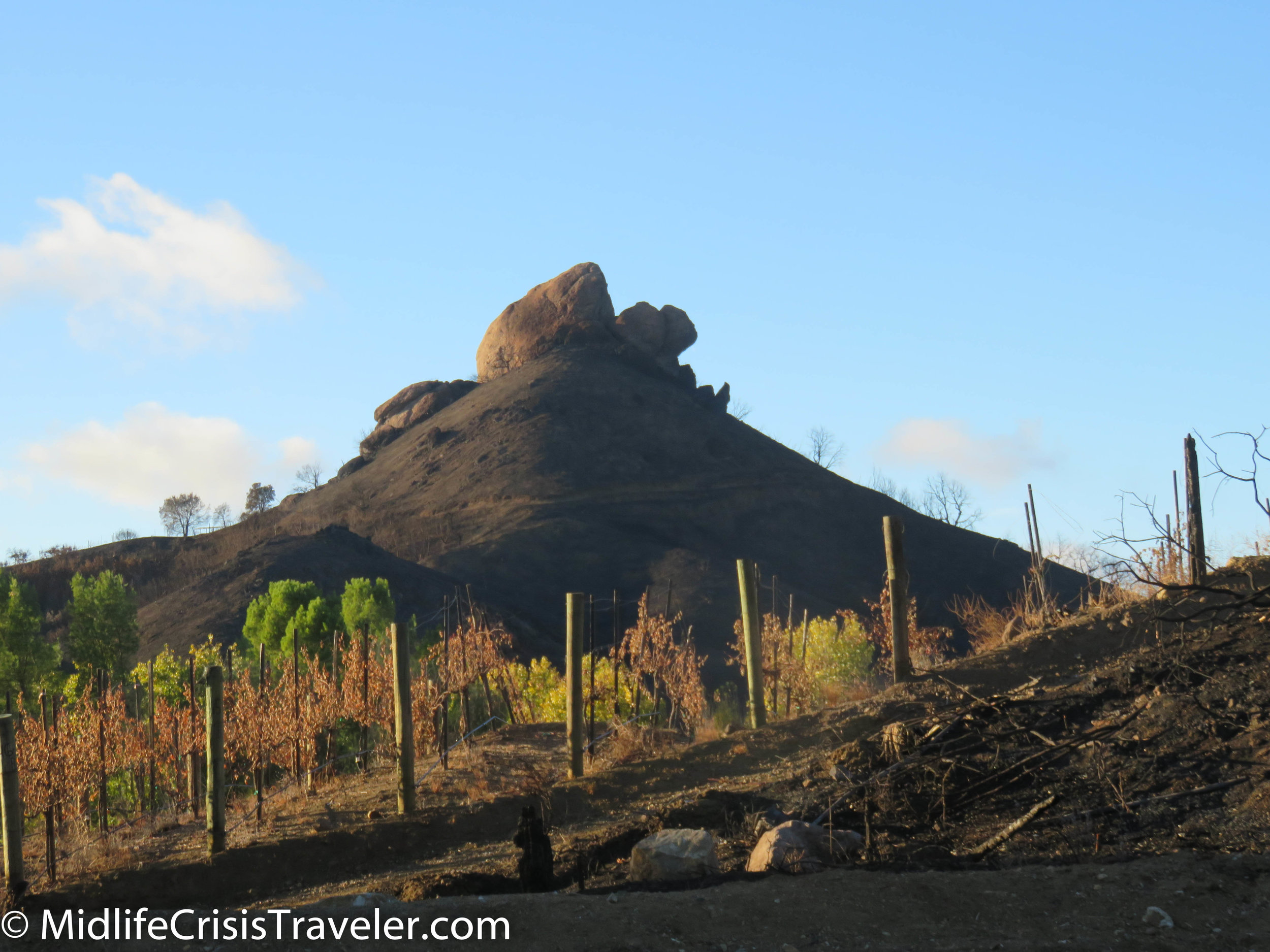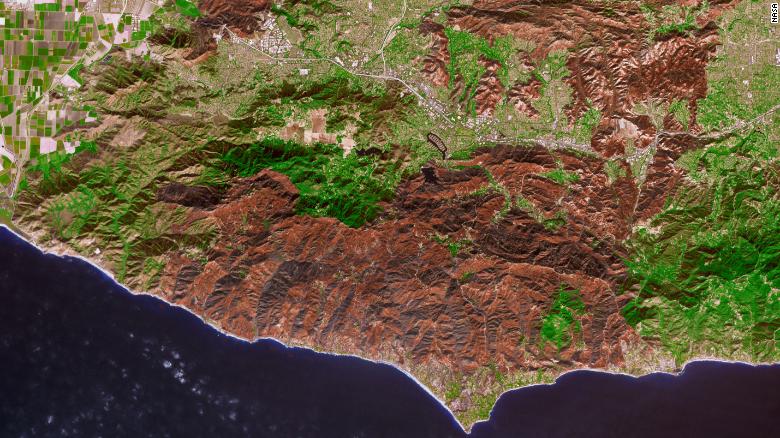The Woolsey Fire in southern California destroyed almost 97,000 acres, killed three people and forced the evacuation of almost 300,000 residents. The fire started on 11/8/18 and was fully contained on 11/21/18. Here are some pictures of the fire when it was burning out of control.
Photo courtesy of Businessinsurance.com
Photo courtesy of Curbedla.com
Photo courtesy of Hollywoodreporter.com
Photo courtesy of weathernationtv.com
Photo courtesy of wikipedia.com. Residents evacuate Malibu, CA.
This house was built to withstand a fire. Notice the large driveway that goes completely around the house, creating a barrier for the flames. The garage to the left was not so lucky and was destroyed by the fire.
A simple spark from power lines, an out of control campfire or lightning strikes can start a fire but the major cause of destruction is the wind. Strong winds can carry embers from a small fire and drop them onto hillsides or into canyons where there is no fire to exponentially expand a fire area. In the Woolsey fire, the winds escalated to 50-60 miles per hour which rapidly spread the flames. I spoke with one gentleman who said that he received a call from family who said they needed to be evacuated and came to stay the night in their home. A few hours later, their own neighborhood was evacuated because the fire had continued to advance. Geography can also make it difficult to fight fires and get rescue equipment to where it is needed.
The local utility company used a helicopter to set new power poles so they could string new lines along the mountains. The chopper hooked onto a pole, circled to where workers guided it into a hole and then repeated the cycle. Even this was a dicey project as the winds were still gusting around 25 miles per hour.
I moved to Los Angeles in May and it only rained (actually drizzled, not a full rain) twice in the first six months I’ve lived here. These drought conditions leave the hills in a high-risk condition. Between the dry climate, a simple spark and the high winds, you have a recipe for disaster. Many of these mountains have been completely scorched and there is very little vegetation left. The desert trees, shrubs and grass will grow again over time but these areas are at risk for mudslides if any significant rainfall occurs.
A stone mansion which survived the fires overlooks the mountains.
The Burn Scar from outer space.
This CNN article explains the mudslide risk.

















































